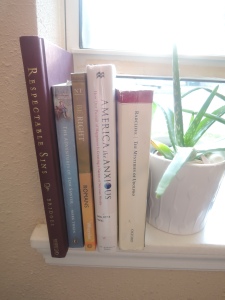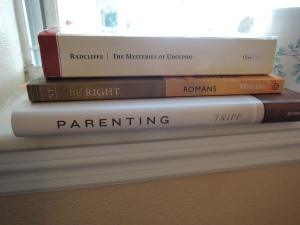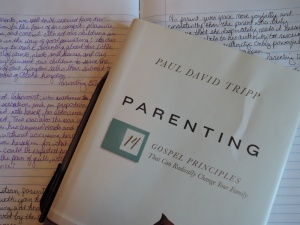“There had to be the dark and muddy waters so that the sun could have something to background its flashing glory.” Page 165
There is much “muddy water” in Francie Nolan’s life. Born in poverty in the Williamsburg neighborhood of Brooklyn, Francie’s life is in many ways a tragedy. Her father is a drunk and her mother doesn’t love her; there’s often not enough money for food and the community around is depraved to say the least. And yet, like the tree mentioned in the title, Francie’s spirit can’t be killed. She presses through the hardest of circumstances to survive.

A “Tree of Heaven” in an urban yard
What do I talk about from a book of nearly 500 pages that has thoroughly captivated me for the past month? This novel is beautiful. It is hard, very hard. But it is also beautiful. To quote the book itself, when Francie is quested by her teacher about the dark subject material of her writing compositions:
“What does one write about?” Unconsciously, Francie picked up the teacher’s phraseology.
“One delves into the imagination and finds beauty there. The writer, like the artist, must strive for beauty always.
“What is beauty?” asked the child.
“I can think of no better definition than Keats’: Beauty is truth, truth is beauty.”
Francie took her courage into her two hands and said, “Those stories are the truth.”
“Nonsense!” exploded Miss Gardner. (page 321)
While Miss Gardner wasn’t convinced, I am. A Tree Grows in Brooklyn is a true story, based on the life of the author Betty Smith. Like Francie, she was born in Williamsburg and bounced between multiple apartments with her hardworking mother and drunken father. Like Francie, and the Tree of Heaven, she sunk roots into the concrete and strived to reach the sky. And like Francie, when she was a young adult she made her way out of the clutches of poverty to study in Michigan and lay a new path for her life.
As I was reading I jumped off on rabbit trails many times to do additional research into the setting. I’m a Midwest girl (and now a Florida transplant). Building over 3 stories have been rare in my experience – especially block after block after block of raw humanity stacked together like sardines. It’s amazing how landlords/architects will follow the letter of the law (“ventilation”) while completely missing the point (livable conditions for tenement residents). You can search for “dumbbell tenements” if you want to learn more.

Modern aerial view of tenements described in the novel
This book is sad. There isn’t any other word to summarize it. From the beginning pages, we hear about children being exploited and tormented. One young single mother is even stoned (not to death, but to injury) and a child is murdered. There seems to be little joy to be found, and yet, I found it in these many pages. It is a very engaging book. You have to look hard for the hope, but it is there, and by the end the characters have found it as well. I think one of the most poignant things is how *normal* this book is, and yet beautiful in the normal. Crazy things happen (like Sissy’s baby) but the events don’t feel forced or fabricated the way they do in many novels.
This is one I will revisit again after I’ve had time for the ideas to soak into my mind.
This is my 4th book for the Back to the Classics challenge, category: Woman Author











